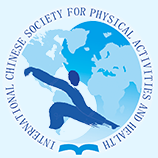Document Type
Abstract
Keywords
rugby speed training, biomechanical
Publication Date
2-2024
Abstract
Purpose: Speed training is an essential and important part of rugby. Usually in confrontational events, strength will have a powerful effect, but good speed will be more than that plus works. Rugby speed drills can be complex or simple things that coaches choose. To the best of the speed required depends on the position, but every player on the field can be trained to get faster. Methods: Through the literature method, logic analysis and other related analysis of sports biomechanics of speed training in football, in order to provide some theoretical basis and reasonable suggestions for speed training, to improve the efficiency of speed training in football to make a contribution. Result: One of the most common scenes in football is when players speed up and slow down over and over again. Acceleration on the field can take many forms. Acceleration relies more on the quads and running at top speed relies more on the hamstrings and hip flexors. Acceleration depends on the strength of the buttocks, quadriceps, calves, and upper body (especially the anterior deltoid tract). Absolute strength, relative strength and running technique are also important. The process of deceleration is accomplished through centrifugal contraction of the legs, which creates the muscle elasticity to counter and mitigate impact and is a key element in the ability of athletes to perform rapid deceleration. To cushion such an impact, explosive force is absolutely essential, and the knee and hip joints also require a certain amount of flexion to effectively cushion the impact, a movement similar to the landing technique. But in actual speed training situations, a different scenario can occur, and many coaches directly relate disadvantage factors. Conclusion: First, speed training programs must be designed to meet the bioenergetic and biomechanical requirements encountered by athletes during competition and practice. Each position on the field needs to differentiate the composition of the training load to meet the different requirements that these players must meet during the game. Secondly, we should closely monitor the amount and time of speed training according to the actual situation and focus on the recovery of the body. Coaches should avoid the urge to rush, as athletes may practice incorrect sports biomechanics when they are tired. Finally, the coach should analyze the limiting factors of the disadvantageous elements, train the limiting factors of plasticity, and finally achieve the goal of improving the disadvantageous elements.
DOI
https://doi.org/10.18122/ijpah.3.1.6.boisestate
Recommended Citation
Ren, Li
(2024)
"A28: Biomechanical Analysis and Research in Rugby Speed Training,"
International Journal of Physical Activity and Health: Vol. 3:
Iss.
1, Article 6.
DOI: https://doi.org/10.18122/ijpah.3.1.6.boisestate
Available at:
https://scholarworks.boisestate.edu/ijpah/vol3/iss1/6
Included in
Exercise Science Commons, Health and Physical Education Commons, Public Health Commons, Sports Studies Commons



